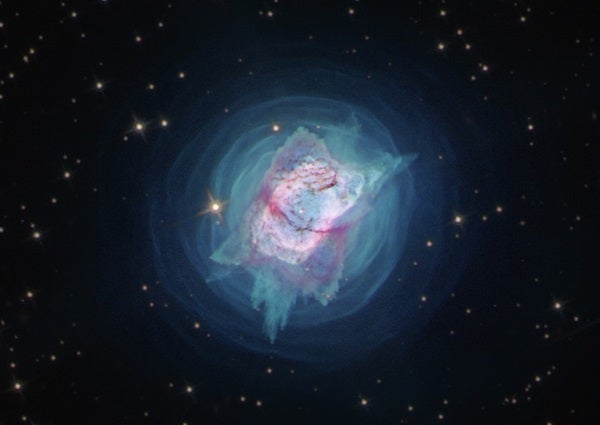On Earth, jewel bugs, which sport brilliant metallic shells, can be found all across the globe. But NGC 7027 is the only place in the universe where you can find a stellar version of the terrestrial insect.
Located about 3,000 light-years away in the constellation Cygnus, NGC 7027 is a glowing bubble of expanding gas — known as a planetary nebula — that happens to have a shape roughly reminiscent of a shielded jewel bug.
The Hubble Space Telescope captured this pastel-colored image of NGC 7027 in near-ultraviolet (NUV) light, which borders visible light on the spectrum. This was the first time NGC 7027 was observed in this wavelength.
Astronomers have frequently studied NGC 7027 before, but with the new NUV observations, researchers hope to learn more about the amount of dust that obscures the jewel bug’s central star, as well as how hot that star really is.

What we can learn from the life cycles of stars? Astronomy’s free downloadable eBook, Stars: The galaxy’s building blocks contains everything you need to know about how stars live, die, and change their galactic homes over time.
Planetary nebula NGC 7027 was formed when a dying star cast out its outer layers due to increasing stellar winds, creating a distinct bubble-like feature. Despite their name, however, planetary nebulae have nothing to do with planets. They are so-called because William Herschel, who studied the cosmic wonders over 200 years ago, noticed they looked round like the planets.
Astronomers will be able to study how NGC 7027 has changed over time by comparing past research with the new observations, giving them a better understanding to how stunning planetary nebulae evolve over time.










